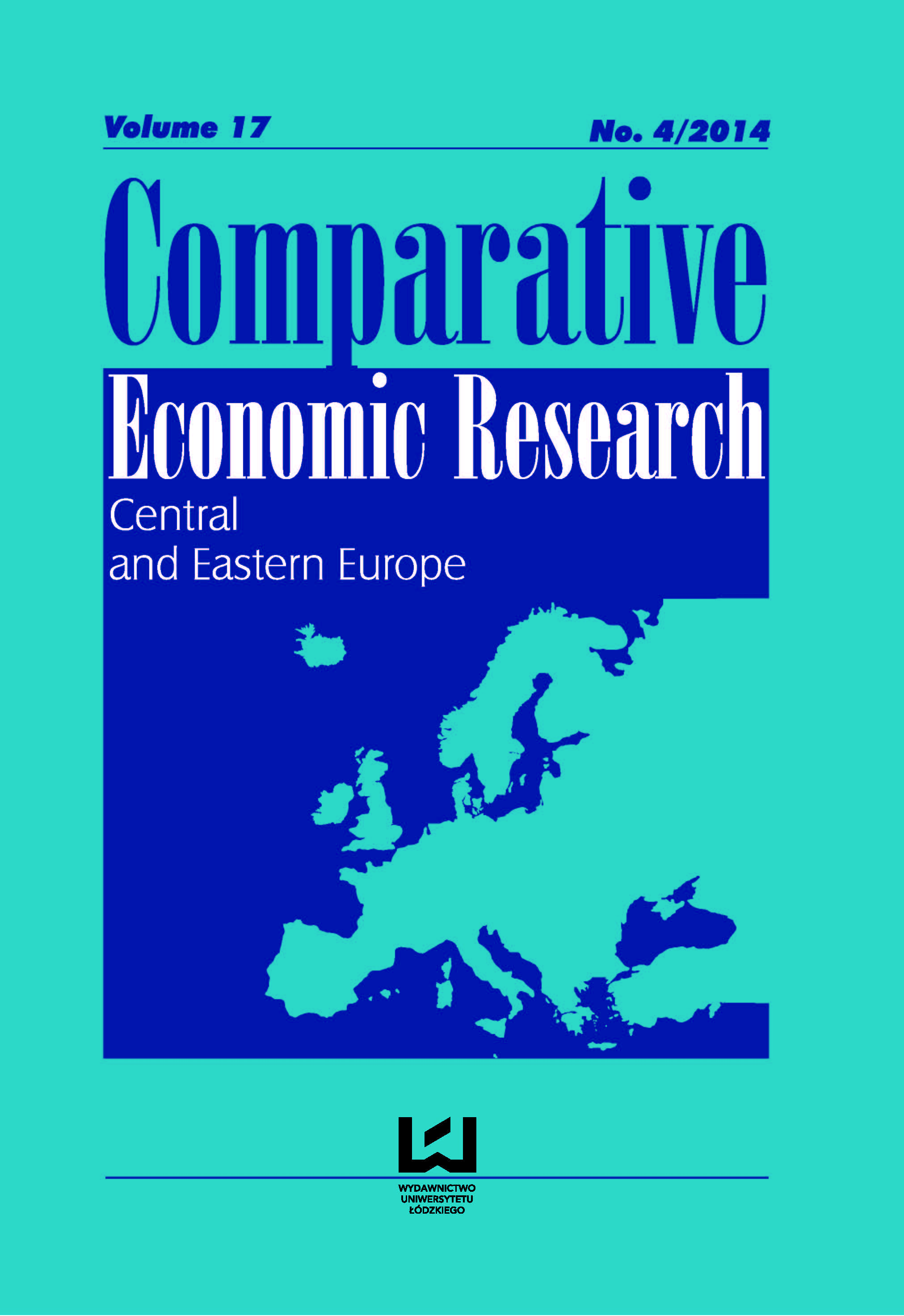Selected Intangible Factors Of Regional Development: An Analysis Of Spatial Relationships
DOI:
https://doi.org/10.2478/cer-2014-0030Keywords:
human capital, social capital, regional development, exploratory spatial data analysisAbstract
As spatial diversity of economic development is one of the main problems of modern economies, researchers have attempted to define the conditions and factors influencing this phenomenon. Among others, two intangible factors are suggested: human capital and social capital (Herbst ed. 2007). The primary objective of this work is a spatial and spatio-temporal analysis of the diversification of human and social capital within the Polish NUTS 3 subregions. The two detailed targets are constructing composite indicator of both of the mentioned types of capital as well as examining spatial interactions between human capital, social capital and the GNP level per capita. The large diversification of human and social capital in the Polish subregions has been confirmed. Clusters of regions with low levels of human capital have been indicated, whereas in the case of social capital a grouping of its high values was observed. The research also confirmed the positive correlation between GNP per capita and human capital, with high values of both variables in the larget cities. Additionally, there are some subregions with high levels of economic development surrounded by low levels of human and social capital (Łódź, Szczecin, Wrocław). It is possible that high level of GNPpc in these regions was the incentive causing the relocation of human capital from the neighbouring regions. The correlation between GNPpc and social capital, where significant, is of the low-high type. These subregions are located in the east and south of Poland.
Downloads
References
Bassanini, A., Scarpetta S. (2001), Does Human Capital Matter for Growth in OECD Countries?: Evidence from Pooled Mean-Group Estimates, ‘OECD Economics Department Working Papers’, No. 282, OECD Publishing.http://dx.doi.org/ doi: 10.1787/424300244276
Google Scholar
Bartkowski J. (2007), Kapitał społeczny i jego oddziaływanie na rozwój w ujęciu socjologicznym, [in:] M. Herbst (ed.), Kapitał ludzki i kapitał społeczny a rozwój regionalny, Wydawnictwo Naukowe Scholar, Warszawa.
Google Scholar
Becker G.S. (1964), Human Capital, Columbia University Press for the National Bureau of Economic Research, New York.
Google Scholar
Benhabib J., Spiegel M. (1994), The role of human capital in economic development: Evidence from aggregate cross-country data, Journal of Monetary Economics 43.
Google Scholar
Blume L., Sack D. (2008), Patterns of social capital in West German regions, ‘European Urban and Regional Studies’, 15 (3), pp. 229-248. doi: 10.1177/0969776408090416
Google Scholar
Coleman J.S. (1988), Social Capital in the Creation of Human Capital, ‘American Journal of Sociology’, Vol. 94, Supplement: Organizations and Institutions: Sociological and Economic Approaches to the Analysis of Social Structure, pp. S95-S120.
Google Scholar
Cote S. (2001), The Contribution of Human and Social Capital, ‘Canadian Journal of Policy Research’, vol. 2.
Google Scholar
de la Fuente A. (2002), On the sources of convergence: A close look at the Spanish regions, European Economic Review European Economic Review 46 (2002), pp. 569-599.
Google Scholar
Działek J. (2009), Social Capital and Economic Growth in Polish Regions, Munich Personal RePEc Archive, Paper No.18287; http://mpra.ub.uni-muenchen.de/18287/1/MPRA_paper_18287.pdf (dostęp: 22.05.2014).
Google Scholar
Działek J. (2011), Kapitał społeczny jako czynnik rozwoju gospodarczego w skali regionalnej i lokalnej w Polsce, Kraków, Wydawnictwo Uniwersytetu Jagiellońskiego.
Google Scholar
Florczak W. (2006), Miary kapitału ludzkiego w badaniach ekonomicznych i społecznych, ‘Wiadomości Statystyczne’, nr 12.
Google Scholar
Field J. (2005), Social capital and lifelong learning, Bristol, Policy Press.
Google Scholar
Herbst M. (red.) (2007) Kapitał ludzki i kapitał społeczny a rozwój regionalny, Wydawnictwo Naukowe Scholar, Warszawa.
Google Scholar
Janc K. (2009), Zróżnicowanie przestrzenne kapitału ludzkiego i społecznego w Polsce, ‘Rozprawy Naukowe Instytutu Geografii i Rozwoju Regionalnego’, UWr, 8, Wrocław.
Google Scholar
Kapitał ludzki w Polsce w 2010 r., Główny Urząd Statystyczny, Gdańsk, 2012.
Google Scholar
Knack S., Keefer P. (1997), Does Social Capital Have an Economic Payoff? A Cross-Country Investigation, ‘The Quarterly Journal of Economics’, Vol. 112, no. 4.
Google Scholar
Portes A. (1998), Social Capital: its Origins and Application in Modern Sociology, ‘Annual Review of Sociology’, vol. 24.
Google Scholar
Sztaudynger J.J. (2005), Wzrost gospodarczy a kapitał społeczny, prywatyzacja i inflacja, PWN, Warszawa.
Google Scholar
Trigilia C. (2001), Social capital and local development, ‘European Journal of Social Theory’, 4, pp. 427-442.
Google Scholar
The Well-being of Nations. The Role of Human and Social Capital, OECD , (2001), dostępne: http://www.oecd.org/dataoecd/36/40/33703702.pdf [accessed 15.05.2014].
Google Scholar
Downloads
Published
How to Cite
Issue
Section
License

This work is licensed under a Creative Commons Attribution-NonCommercial-NoDerivatives 4.0 International License.











